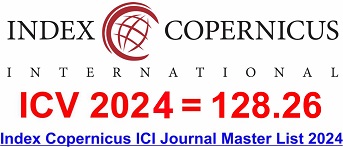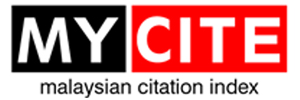Contraceptive Use Obstacles Faced by Newly Arrived Migrant Women
DOI:
https://doi.org/10.31674/mjn.2024.v16isupp1.006Abstract
Background: For recently arrived immigrant women, access to reproductive health care, including contraception, may be hampered by numerous obstacles. To eliminate these obstacles and advance access to care, community organizations’, legislators, and nurses and other healthcare providers must collaborate. A current study was carried out to look at the Obstacles to family planning use among recently arrived immigrant women in Egypt. Aim: This study assesses contraceptive use Obstacles faced by newly arrived migrant women. Methods: The current study used a descriptive exploratory research design to accomplish its goal. The study was conducted at the teaching hospital's obstetrics and gynaecology outpatient clinics in Egypt. A purposefully selected 500 migrant women. For data collection tools three instruments were used: a questionnaire for interviews, a tool to identify obstacles to contraception use, and a questionnaire to assess the complications of utilizing family planning techniques. Results: The current study assessed obstacles that women reported there are many obstacles to the use of contraceptives. Knowledge barriers, family barriers, transport barriers, institutional barriers and administrative barriers are only some of the obstacles that exist. Furthermore, the sociodemographic characteristics of the participants have a significant relationship with the existing obstacles. Conclusion: There are numerous barriers to the use of contraceptive methods, including inadequate awareness, a lack of techniques and medical supplies, and a lack of outpatient clinics that offer 24-hour services for all participants. Recommendation: By offering culturally appropriate education, language assistance, and patient guidance we can provide immigrant women with the knowledge and tools they require to make well-informed decisions regarding their reproductive health.
Keywords:
Contraceptive Use, Migrant Women, ObstaclesDownloads
References
Achola, R., Atuyambe, L., Nabiwemba, E., Fredrick, M., & Orach, C. G. (2024). Factors associated with family planning use among migrant and host populations in Adjumani district, West Nile, Uganda: A comparative study. BMC Public Health, 24(1). https://doi.org/10.1186/s12889-024-18103-x
Andrade, M., Sato, L., & Hammad, M. (2021). Improving social protection for migrants, refugees, and asylum seekers in Egypt: An overview of international practices (Research Report No. 57). International Policy Centre for Inclusive Growth (IPC-IG). Brasilia, Brazil. https://hdl.handle.net/10419/234898
Aziz, M. M., & El-Gazzar, A. F. (2023). Provider bias and family planning in Upper Egypt: a simulated client approach. The Journal of the Egyptian Public Health Association, 98(1), 19. https://doi.org/10.1186/s42506-023-00144-6
Bohl, D. K., Hanna, T. L., Scott, A. C., Moyer, J. D., Hedden, S. G., & Conceição, P. (2018). Sustainable development goals report: Egypt 2030. Ministry of planning, monitoring and administrative reform, central agency for public mobilization and statistics, & national institute for planning Joseph Korbel School of International Studies, university of Denver, 2018, 2-42. Retrieved from: https://www.undp.org/sites/g/files/zskgke326/files/migration/eg/Sustainable-Development-Goals-Report.-Egypt-2030.pdf, Accessed on 10th February, 2024.
Chalmiers, M. A., Karaki, F., Muriki, M., Mody, S. K., Chen, A., & Thiel de Bocanegra, H. (2022). Migrant women’s experiences with contraceptive care after resettlement in high-income countries: A critical interpretive synthesis. Contraception, 108, 7–18. https://doi.org/10.1016/j.contraception.2021.11.004
Darebo, T. D., Spigt, M., Teklewold, B., Badacho, A. S., Mayer, N., & Teklewold, M. (2024). The sexual and reproductive healthcare challenges when dealing with female migrants and refugees in low and middle-income countries (a qualitative evidence synthesis). BMC public health, 24(1), 520. https://doi.org/10.1186/s12889-024-17916-0
Dwyer, S. C., Jain, A., Baruwa, S., Okafor, E., Oluseyi, D. B., & Ubuane, O. (2022). How do fertility intentions lead to contraceptive continuation among a cohort of family planning users who received services from the private sector in Nigeria. Gates Open Research, 5. https://doi.org/10.12688/gatesopenres.13253.2
El-Moselhy, E., Farag, M., Manal, M., & Alyaa, H. (2017). Trends and determinants of contraceptive use among young (15-24 year) married women: A secondary analysis based on the 2008 and 2014 Egypt demographic and health surveys. The Egyptian Journal of Hospital Medicine, 66, 170-187. https://doi.org/ 10.12816/0034650
Eshak, E. S., Sayed, S. I., Kamel, E. G., & El-Sheref, M. A. (2018). Non-medical predictors forever and current use of contraceptives among women in Minia, Upper Egypt. Journal of Public Health (Germany), 26, 663–671. https://doi.org/10.1007/s10389-018-0912-x
Gebrehiwot, S. W., Abera, G., Berhe, A., & Zenebe K. (2024, January 3). Barriers to contraceptive utilization among reproductive age women of Eritrean refugee in North West Tigray, Ethiopia: A mixed study (Version 1) [Preprint]. Research Square, 1–26. https://doi.org/10.21203/rs.3.rs-3815580/v1
Ha, T., Givens, D., Shi, H., Nguyen, T., Nguyen, N., Shrestha, R., Frank, L., & Schensul, S. L. (2023). Assessing barriers and utilization of sexual and reproductive health services among female migrant workers in Vietnam. International Journal of Environmental Research and Public Health, 20(14). https://doi.org/10.3390/ijerph20146368
International Organization for Migration (IOM). (2022, July). Triangulation of Migrants Stock in Egypt. IOM Egypt. Retrieved from: https://egypt.iom.int/sites/g/files/tmzbdl1021/files/documents/migration-stock-in-egypt-june-2022_v4_eng.pdf, Accessed on 9th December, 2023
Islam, M. M., Rahman, M. M., & Khan, N. (2022). Barriers to male condom use in Rohingya migrant camps in Bangladesh: A qualitative study. The Lancet Regional Health - Southeast Asia, 2. https://doi.org/10.1016/j.lansea.2022.04.004
Kassim, M., & Ndumbaro, F. (2022). Factors affecting family planning literacy among women of childbearing age in the rural Lake Zone, Tanzania. BMC Public Health, 22. https://doi.org/10.1186/s12889-022-13103-1
Key, K., Wollum, A., Asetoyer, C., Cervantes, M., Lindsey, A., Rivera, R. Z., Flint, J. R., Zuniga, C., Sanchez, J., & Baum, S. E. (2023). Challenges accessing contraceptive care and interest in over-the-counter oral contraceptive pill use among Black, Indigenous, and people of colour: An online cross-sectional survey. Contraception, 120. https://doi.org/10.1016/j.contraception.2023.109950
Nabulsi, D., Abou Saad, M., Ismail, H., Doumit, M. A., El-Jamil, F., Kobeissi, L., & Fouad, F. M. (2021). Minimum initial service package (MISP) for sexual and reproductive health for women in a displacement setting: a narrative review on the Syrian refugee crisis in Lebanon. Reproductive Health, 18, 1-13. https://doi.org/10.1186/s12978-021-01108-9
Obels, I., Coleman, H., Straetemans, M., van Gurp, M., & others. (2022). Determinants of health-seeking behaviour in South Sudan: A cross-sectional household survey (Version 1) [Preprint]. Research Square. https://doi.org/10.21203/rs.3.rs-2272887/v1
Peng, B., & Ling, L. (2023). Health service behaviours of migrants: A conceptual framework. Frontiers in Public Health, 11. https://doi.org/10.3389/fpubh.2023.1043135
Sawadogo, P. M., Sia, D., Onadja, Y., Beogo, I., Sangli, G., Sawadogo, N., Gnambani, A., Bassinga, G., Robins, S., & Nguemeleu, E. T. (2023). Barriers and facilitators of access to sexual and reproductive health services among migrant, internally displaced, asylum seeking and migrant women: A scoping review. PLoS One, 18(9). https://doi.org/10.1371/journal.pone.0291486
Tanaka, M., Manandhar Shrestha, R., Shah, R., Bhandari, D., & Gyawali, B. (2024). Gaps in migrants’ access to contraceptive services: A survey of Nepalese women and men in Japan. Healthcare (Switzerland), 12(13). https://doi.org/10.3390/healthcare12131320
United Nations High Commissioner for Refugees (UNHCR). (2019). Vulnerability assessment of refugees in Egypt: Risks and coping strategies. UNHCR Egypt. Retrieved from: https://www.unhcr.org/eg/wp-content/uploads/sites/36/2021/01/Vulnerability-Assessment-of-Refugees-in-Egypt-Risks-and-Coping-Strategies-April-2019.pdf, Accessed on 10th January, 2023.
United Nations High Commissioner for Refugees (UNHCR). (2023). Global Trends Report 2023: Forced displacement in 2023. UNHCR. Retrieved from: https://www.unhcr.org/global-trends-report-2023, Accessed on 10th January, 2023.
World Health Organization. (2023, September 5). Family planning/contraception methods. World Health Organization. Retrieved from: https://www.who.int/news-room/fact-sheets/detail/family-planning-contraception, Accessed on 16th January, 2023.
Wijaya, M., Elba, F., Sari, A. N., Hilmanto, D., & Poddar, S. (2022). Increasing knowledge of health cadres through training on how to choose contraception methods in soreang district. Malaysian Journal of Medical Research (MJMR), 6(1), 1-4. https://doi.org/10.31674/mjmr.2022.v06i01.001
Published
How to Cite
Issue
Section
License
Copyright (c) 2024 The Malaysian Journal of Nursing (MJN)

This work is licensed under a Creative Commons Attribution-NonCommercial-NoDerivatives 4.0 International License.



































